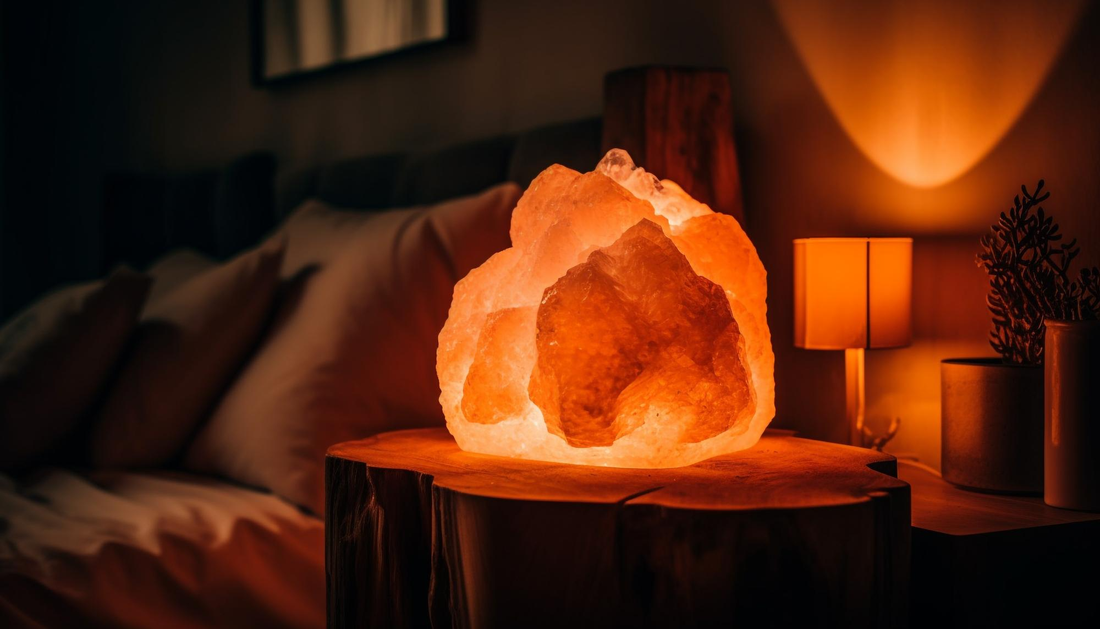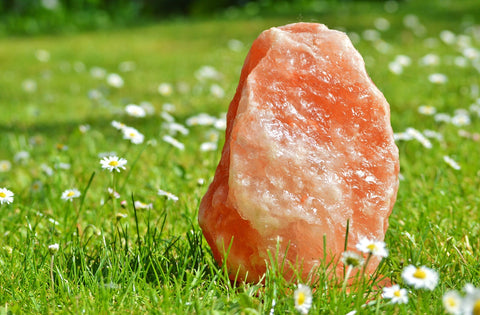
The Science Behind Himalayan Salt Lamps: Fact vs. Fiction
Curious about the buzz around Himalayan salt lamps? In this post, we explore the science behind these trendy home décor items, separating fact from fiction. Discover the truth about their claimed benefits and whether they're a worthwhile addition to your living space.
Introduction to Himalayan Salt Lamps
Himalayan salt lamps have gained immense popularity in recent years, with claims of providing numerous health benefits and improving the air quality in our homes. These unique and aesthetically pleasing lamps are made from large chunks of Himalayan pink salt and emit a warm glow when lit up. However, there is much debate surrounding the science behind these lamps and whether they truly live up to their supposed benefits.
Himalayan Salt Lamps: Origins and Composition

Originating from the foothills of the Himalayas in Pakistan, these lamps are crafted from ancient rock salt that dates back millions of years. The vibrant pink hue of the salt is said to be due to its high mineral content, including iron oxide, potassium, magnesium, and calcium. Proponents believe that when heated by a light bulb inside the lamp. They release negative ions into the air, which can have positive effects on our well-being. Negative ions are tiny electrically charged particles found in nature, particularly near waterfalls or after a thunderstorm. They are believed to counteract the effects of positive ions that are emitted by electronic devices such as televisions, computers, and cell phones. Positive ions have been linked to causing fatigue, stress, and other health issues. For insights into the science of ionization and its applications, consult resources provided by the International Union of Pure and Applied Chemistry (IUPAC).
Air Purification Claims
One of the main selling points for Himalayan salt lamps is their ability to purify the air by attracting water molecules from their surroundings onto its surface through a process called hygroscopy. As these water molecules evaporate due to heat from the light bulb inside the lamp, it is believed that any contaminants present in them will remain trapped within the lamp's surface.
However, many scientists argue that these claims lack substantial evidence and point out several flaws in this theory. Firstly, while negative ions do exist in nature and can have beneficial effects on our health when present in adequate quantities indoors; there is no conclusive evidence that Himalayan salt lamps release enough negative ions to make any significant impact on our well-being.
Furthermore, the hygroscopic nature of salt lamps has been debated, as there is no scientific proof that it can attract and trap airborne particles or impurities. In fact, a study conducted by researchers at Johns Hopkins University found that salt lamps had no effect on air quality and were unable to remove contaminants from the air.
While Himalayan salt lamps may provide a soothing ambiance and add an attractive element to our homes, their supposed health benefits lack concrete scientific evidence. It is essential to approach these claims with caution and not rely solely on these lamps for any significant health improvements.
Himalayan Salt Common Myths vs. Scientific Benefits
Himalayan salt lamps have gained quite a bit of popularity in recent years, with many people claiming they offer numerous health benefits. However, as with any popular product, there are also some common myths surrounding Himalayan salt lamps. In this section, we will debunk these myths and explore the true scientific benefits of these unique lamps.
Myth #1: They release negative ions that improve air quality
One of the most commonly believed myths about Himalayan salt lamps is that they release negative ions into the air which can purify and improve indoor air quality. While it is true that Himalayan salt contains minerals and trace elements that can produce negative ions when heated, research has shown that the amount released by a Himalayan salt lamp is very minimal and not enough to significantly impact air quality
Myth #2: They can cure respiratory ailments
Another common myth surrounding Himalayan salt lamps is their ability to cure respiratory ailments such as asthma or allergies. While the warm glow of a salt lamp may create a soothing environment for those suffering from respiratory issues, there is no scientific evidence to support the claim that they can actually cure these conditions.
Myth #3: They provide relief for stress and anxiety
Many people believe that Himalayan salt lamps emit a calming energy that can reduce stress and anxiety levels. However, there is no scientific evidence to support this claim. The warm ambient light may create a relaxing atmosphere which could potentially help alleviate stress, but it is not due to any special properties of the lamp itself.
Now let's take a look at the real scientifically proven benefits of Himalayan salt lamps:
Benefit #1: They act as natural ionizers
While it may not significantly impact air quality, Himalayan salt lamps do have some ionizing effects due to their mineral composition. Negative ions have been linked to reducing symptoms of seasonal affective disorder (SAD) and improving overall mood.
Benefit #2: They can help reduce electromagnetic radiation
We are constantly surrounded by technology and electronic devices, all of which emit electromagnetic radiation. Himalayan salt lamps can help neutralize some of this radiation by emitting negative ions, which can potentially reduce the harmful effects of long-term exposure to electromagnetic fields.
Benefit #3: They create a relaxing ambiance for better sleep
The warm glow emitted by Himalayan salt lamps can also have a soothing effect on the mind and body, promoting relaxation and improving sleep quality. This is especially beneficial for those who struggle with insomnia or other sleep disorders.
While there may be many myths surrounding the benefits of Himalayan salt lamps, there are still scientifically proven benefits that make them a valuable addition to your home. While they may not cure any ailments or drastically improve air quality, they can provide a calming atmosphere and potential health benefits through their ionizing effects.
How They Work: Air Purification and Ionization

Air purification and ionization are two key processes involved in the functioning of Himalayan salt lamps. These lamps are believed to release negative ions that can purify the air in our homes and provide various health benefits. In this section, we will delve deeper into how these lamps work to improve the air quality in our living spaces.
Understanding Negative Ions: Nature's Charge
Firstly, let's understand what negative ions are and why they are important for our well-being. Negative ions are molecules that have gained an extra electron, giving them a negative charge. They naturally occur in nature, especially around waterfalls, forests, and beaches. Research has shown that exposure to negative ions can help alleviate symptoms of allergies, asthma, stress, and depression.
Himalayan salt lamps work by emitting negative ions into the air through a process called ionization. The heat from the lamp's bulb causes the salt crystal to absorb moisture from the surrounding environment. As the water evaporates from the surface of the crystal due to heat, it releases negative ions along with it into the air.
These released negative ions then attach themselves to positively charged particles in the air such as dust, allergens, bacteria, and other pollutants. This process is known as electrostatic attraction or "air cleaning." Once attached together, these particles become heavier and fall onto surfaces like floors or furniture rather than staying airborne where they can be easily breathed in.
Moreover, when these negatively charged particles come into contact with positively charged surfaces like electronics or synthetic materials commonly found in our homes, they neutralize their positive charge. This reduces static electricity build-up and creates a more balanced environment for us.
Hygroscopic Properties: Managing Moisture
In addition to ionization through evaporation of water molecules on its surface when heated by a light bulb inside them Himalayan salt lamps also emit a soft glow that adds warmth and ambiance to any room. This warm light helps create a relaxing atmosphere that can contribute to reducing stress levels.
Furthermore, the salt crystals used in these lamps are hygroscopic, meaning they have the ability to attract and absorb water molecules from the air. This process helps remove excess moisture and reduce humidity, which can be beneficial for people with respiratory issues.
Himalayan salt lamps work by utilizing ionization to release negative ions into the air, which then attach to positively charged particles, making them heavier and causing them to fall onto surfaces rather than staying in the air we breathe. These lamps also have a soothing warm glow that creates a relaxing atmosphere while reducing static electricity build-up. Additionally, their hygroscopic properties help remove excess moisture from the air. All of these combined factors contribute to improving indoor air quality and potentially providing certain health benefits.
Health Benefits: Evidence-based Review
Himalayan salt lamps have become increasingly popular in recent years, with many claiming that they offer a range of health benefits. However, it is important to examine the evidence behind these claims and determine if they are fact or fiction. In this section, we will review the current research on the potential health benefits of Himalayan salt lamps.
Examining Health Claims: Unveiling the Truth
Firstly, let's discuss what a Himalayan salt lamp is. These lamps are made from large chunks of pink Himalayan salt that have been hollowed out to fit a light bulb inside. When lit, the lamp emits a warm glow and is often marketed as having therapeutic properties due to its high mineral content.
One commonly touted benefit of Himalayan salt lamps is their ability to improve air quality. It has been claimed that the heat from the lamp releases negative ions into the air which can counteract positive ions produced by electronic devices and pollutants in our environment. However, there is currently no scientific evidence to support this claim. While some studies have shown that negative ions may have some beneficial effects on mood and stress levels, these effects have not been proven to be significant enough for medical use.
Respiratory Relief: Separating Fact from Fiction
Another claimed benefit of Himalayan salt lamps is their ability to reduce symptoms of respiratory conditions such as asthma and allergies. Proponents believe that the negative ions released by these lamps can help clear toxins from the air which can alleviate respiratory symptoms. However, there is little scientific evidence to support this claim either.
A study published in 2013 did find that exposure to high levels of negative ions had a small but significant effect on reducing symptoms in people with seasonal allergies. However, this study was conducted using an ionizer machine rather than a Himalayan salt lamp specifically.
Mineral Content: Salt Lamp vs. Balanced Diet
Furthermore, while Himalayan salt does contain trace amounts of minerals like magnesium and potassium which are essential for our bodies' functioning, there is no evidence to suggest that inhaling them through a salt lamp offers any additional health benefits compared to obtaining them through a balanced diet.
There is currently no scientific evidence to support the popular claims that Himalayan salt lamps offer significant health benefits. While they may create a calming ambiance in a room, their supposed therapeutic properties have not been proven. As with any alternative health product, it is important to be critical of marketing claims and seek out evidence-based research before investing in these products for their supposed health benefits.
Separating Fact from Fiction
In a nutshell, delving into the science behind Himalayan salt lamps requires a careful examination of fact versus fiction. While these aesthetically pleasing lamps are renowned for their ambient glow and purported health benefits, it's essential to approach their claims with a critical mindset.
Scientifically, the ability of Himalayan salt lamps to release negative ions in significant quantities for notable health benefits remains inconclusive. While they may contribute to a soothing atmosphere, their impact on overall well-being requires further research.
Separating fact from fiction in this context calls for a balance between appreciating the lamps' aesthetic appeal and maintaining a realistic perspective on their health-related assertions. As we enjoy the warm ambiance they provide, let's approach the purported science behind Himalayan salt lamps with a measured and informed perspective.
What are you waiting for? Head over to (https://qnahimalayansalt.com ) and shop now!
